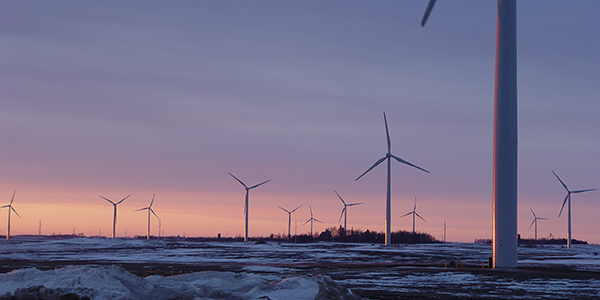By Amanda Durish Cook
CARMEL, Ind. — Continuous improvement of MISO’s wind forecasting is more important than ever now that more than 90% of wind farms in the footprint rely on the RTO’s short-term predictions, officials said during a special conference call Thursday.
MISO Manager of Forecast Engineering Blagoy Borissov said the RTO will continue to refine its wind forecasting to make it “more transparent and more available.”
Forecast Engineer Cameron Saben said only about 8 to 9% of market participants still submit their own five-minute interval forecasts to MISO, a turnaround from a year ago when only a small amount of wind generators relied on the RTO’s forecasts. MISO’s short-term wind forecast is generated every five minutes for the next six hours.
“So far, we were in the background where we were used as the backup,” Senior Operational Forecast Engineer Dorsana Desai said.
Saben said more wind operators using MISO’s forecasts helps cull inaccurate information in their own forecasts.
“What we saw is bad inputs coming into MISO, which affected our ability to forecast,” said Saben, adding that market participants tended to forecast their output too optimistically, creating forecasts “on the high side.”
MISO has put more focus on improved wind forecasting for much of the year, ever since it misjudged output during a cold spell in January. At the time, the RTO lacked details on its wind generation’s ability to operate in extreme temperatures. (See MISO Looks to Get Better Read on Wind.)
Since its April workshop on the subject, MISO said it has improved its forecast by synching up wind forecast intervals with its five-minute market intervals and its dispatch system, allowing the RTO to factor more real-time market data into its wind forecasting.
“All of these process improvements might not have been that significant on their own, but taken together, they were more impactful than we expected,” Desai said.
Saben said MISO has also collected data on the cold-weather shutoff thresholds of nearly all its wind fleet.
“Our vendor is now using this to forecast more accurately,” Saben said.
MISO is working to anticipate extreme temperatures and weather events in forecasting. “All of these situations which were rare before are becoming more common,” she said.
The RTO is still considering a complete redesign of it short-term wind forecasting and is contemplating using either a recent performance-based or probabilistic forecast. It also reported that it’s still working through its own tendency to over-forecast wind output during ramp-down times.
“Because our capacity has grown, our wind forecast error has grown as well,” Saben said. But he said the improvements MISO has made over 2019 should reverse the trend.
Desai said MISO will develop forecast accuracy metrics and start sharing accuracy reports at its monthly Informational Forums.
Saben said during MISO’s all-time 16.3-GW wind record about 1 a.m. on March 15, wind generation served 25% of total MISO load.
“This is quite a large portion, and we expect to see this number grow,” he said.
MISO currently has about 220 wind farms totaling 20 GW and expects to see almost 29 GW by 2023. Over 2019, the RTO said its day-ahead wind production has increased by about 0.5 GW.
Desai said the goal is not perfection.
“Errors are going to persist. All we can do is reduce the magnitude of the errors,” Desai said.
MISO staff said they would continue to hold wind forecasting workshops over the next few years.




